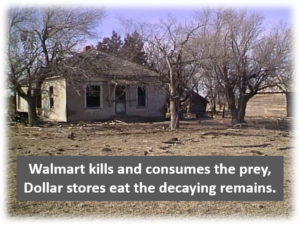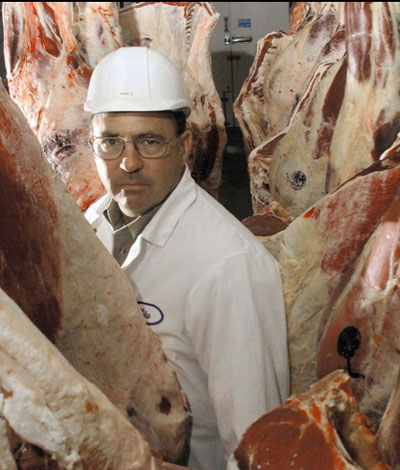When the markets are gone, and the game of monopoly is over
The big-four meatpackers income will be regulated and limited to the drop credit value of the animals they slaughter.
Big food retailers and food service companies will be limited to whatever is leftover after the producer is compensated 65% of the consumer beef dollar as reported by USDA’s Meat Price Spreads.
The largest firms in all animal feeding, slaughter, meat processing, and all food distribution categories will be given two years to downsize to a level not to exceed seven percent for any one firm in the national market, assuring four-firm concentration, unless a public utility, does not exceed 28%.
In the interest of food sovereignty and food security, USDA, guided by a set of new policies, will facilitate the building of new local/regional food, and food related, infrastructure. Aggressive enforcement of the existing Packers and Stockyards Act and antitrust laws will protect the new investments and consumers from current market predators. Animals will once again be processed in owner/operated multi-species plants close to where they’re raised by a newly trained, more efficient workforce. Carcass break down and value-added processing will be done by skilled meat cutters in newly developed marketplaces near the consumer.
New policies designed to improve food safety, working environments, and animal welfare, will encourage a new decentralized regional carcass trade between small rural slaughter plants and independent owner/operated butcher shops, employing well-paid, skilled meat cutters.
In sharing equitably in the wealth created from a developing livestock centered, family farm agriculture, Rural America will begin to rebuild. Consumers everywhere will be able to depend on a healthier, higher quality, affordable, and safer food supply from many sustainable and resilient sources. Workers, and their valuable trade, will be respected and rewarded with living incomes.
With farm and ranch families returning to the land, stewardship and animal husbandry will guide the way to better resource management, soil health, and animal welfare. Rural communities and the environment will begin to recover from the decades of industrial ag’s mining operations.
“Walking backwards into the future”- welcome to 1970 when markets were competitive and America could feed itself.














From Stacy Mitchell @stacyfmitchell
Wall Street investors break up corporations all the time to serve their own interests. Last year, according to Dealogic, investors broke up 56 large companies.
It’s high time that we restore government-led breakups as a tool for serving democratic interests.
https://www.cnbc.com/2021/11/09/ge-to-break-up-into-3-companies-focusing-on-aviation-healthcare-and-energy.html
https://www.thestreet.com/investing/stocks/what-could-a-p-g-breakup-be-worth-for-shareholders-14616342
From Birch Bragg: Without a doubt this is the best plan and vision for the future of our local food economies regarding the raising of livestock and access to the nutrient dense meats they provide. Give this a read and thanks Mike Callicrate for putting forth this simple road map for how we revitalize our rural agrarian communities, fight back the corporate monopolies, provide meaningful jobs in rural towns, increase access to locally produced nutrient dense meats raised and sold by farming families and not multinational corporations. The desertification of our rural communities all across Kentucky and the nation must stop before its too late. It time to reinvest in those communities. Here’s how…
Commissioner Ryan Quarles
David A Neville
Congressman Thomas Massie
Congressman James Comer